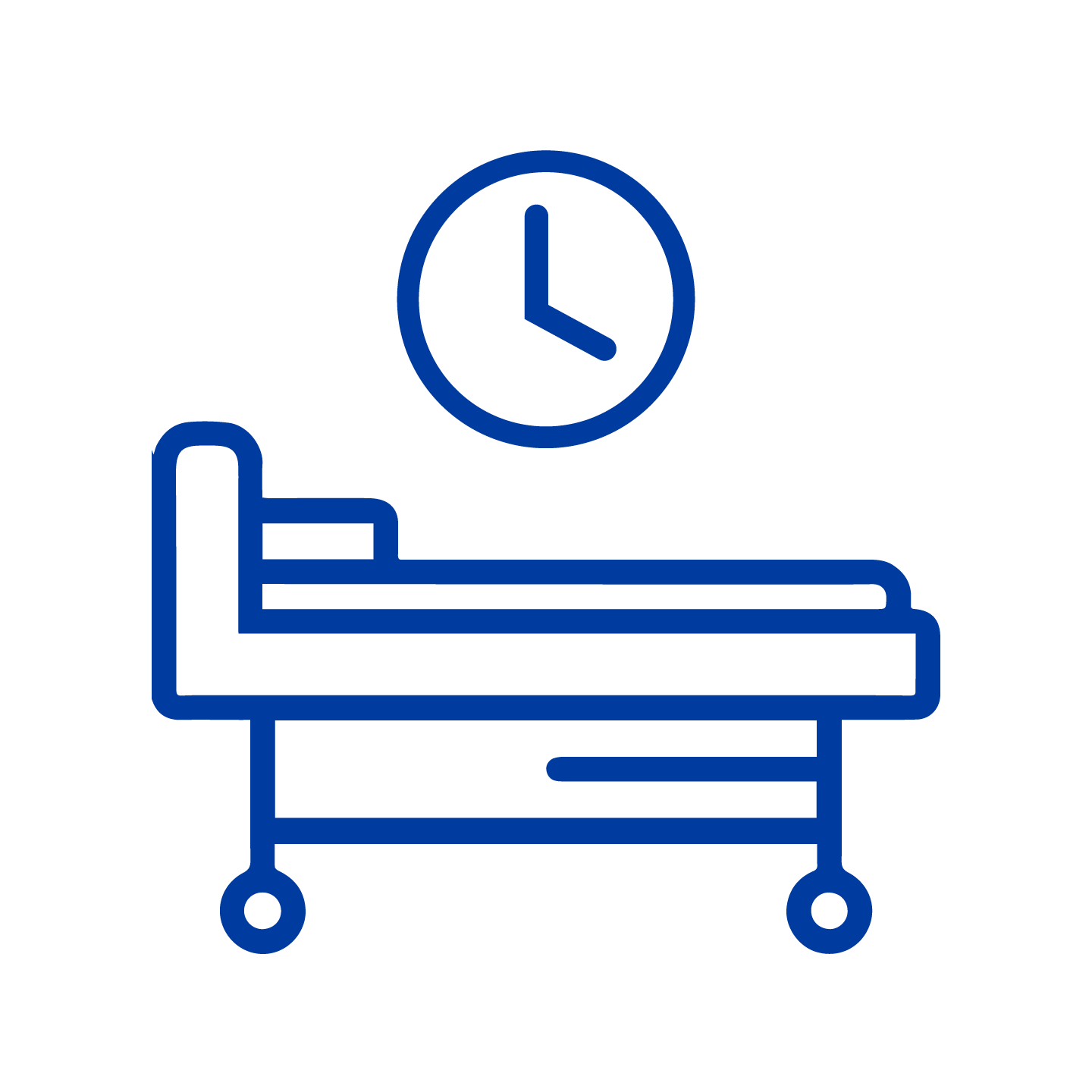For 2024 to 2025, LHSC is focusing quality improvement in five key areas with the following indicators.
 | Length of Emergency Department Wait for an Inpatient BedMeasuring the length of time waiting for the bed is a full system measure, but often collected in the Emergency Department. This measure looks at the percentage of people who waited in the Emergency Department after being formally admitted into a bed or the operating room at LHSC. This is the length of time, in hours, that 90 per cent of our patients wait in the Emergency Department. A smaller number is better as it reflects a better moving system. Our Target: 23 hours or less. |
 | Discharge Summaries Within 48 hoursHaving timely information to primary care providers in the community ensures safe transitions. Many patients seek follow up care immediately post discharge from the hospital. This indicator measures how effective we are in sharing the information. Our Target: 80 per cent or more. |
 | Patient Experience Survey QuestionPatient experience surveys are an important way to measure how our patients feel about their experience. This year our patient partners selected the following question to focus on: “Did you receive enough information from hospital staff about what to do if you were worried about your condition or treatment after you left the hospital”. We will measure our success by those that respond completely to the question. Our Target: 65 per cent or more. |
 | Patient Safety Culture Survey ‘Overall Rating Score’Having a positive patient safety culture contributes to better patient outcomes.This measures the percentage of staff who overall responded positively, through an anonymous survey, to having trust in their leaders, feeling safe to speak up on issues of concern and believing their areas of service is safe. Our Target: 64 per cent or more. |
 | Board and Executive Training on Equity, Diversity and InclusionThis measures the percentage of Board and Executives who have had equity, diversity and inclusion training. Leadership training on equity, diversity, and inclusion metrics is crucial for creating an inclusive workplace and fostering a culture of diversity Our Target: 100 per cent. |



